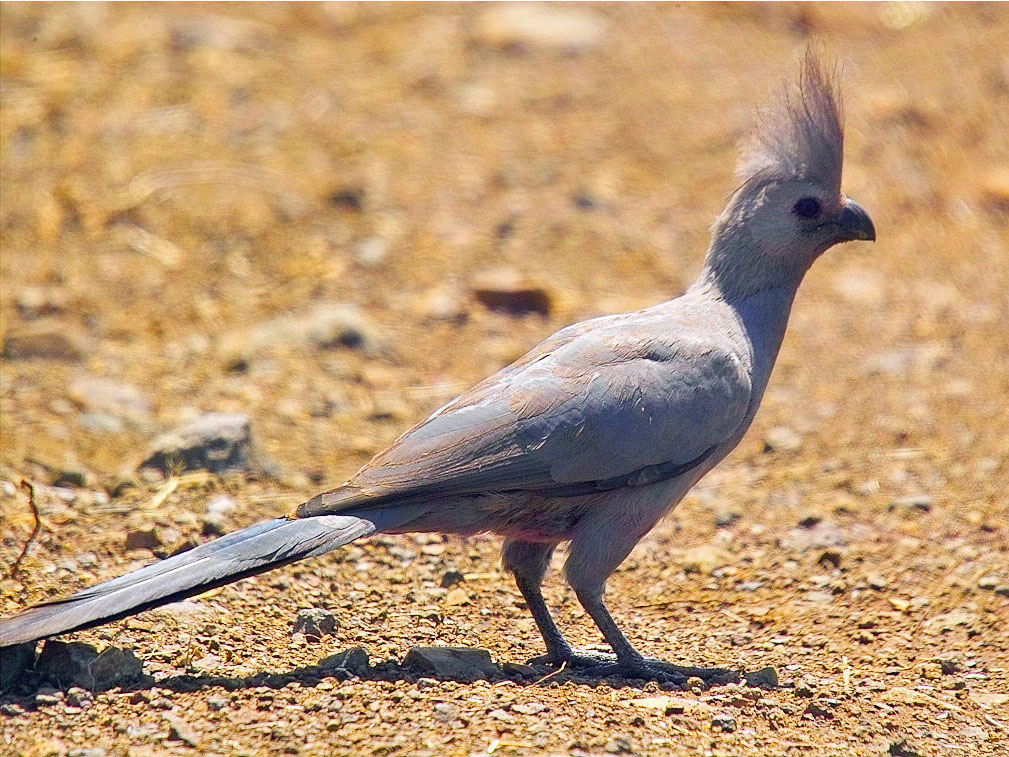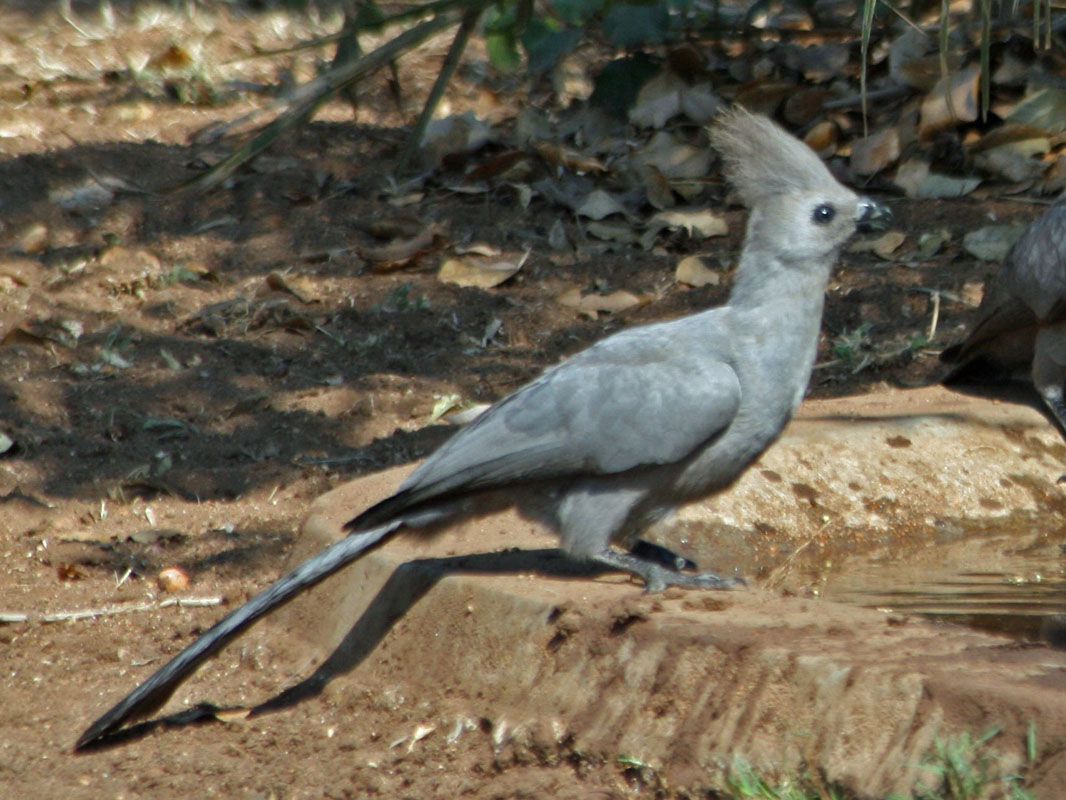
Corythaixoides concolor
SUBFAMILY
Criniferinae
TAXONOMY
Corythaix concolor Smith, 1833, inland of Port Natal (Durban),
South Africa. Four subspecies.
OTHER COMMON NAMES
English: Gray lourie; French: Touraco concolore; German:
Graularmvogel; Spanish: Turaco Unicolor.
PHYSICAL CHARACTERISTICS
18–20 in (46–51 cm); 7.1–12.0 oz (202–340 g). Adult has entire
head and body warm smoky gray, being palest around the eyes,
and darkest on the chin, throat, tail, and primary coverts. In
most forms there is a suffusion of olive green on the breast,
though this is hardly noticeable in the field. Crown feathers
are long and partly decomposed, forming a slightly shaggy
crest that varies in length, and which can be raised or depressed
at will, but when flattened, projects well beyond the
back of the head. Juveniles similar to adults but with shorter
crest and a buffy tinge to the overall appearance.
DISTRIBUTION
Locally common throughout the northern parts of South
Africa from Zululand and the eastern Transvaal north to
Mozambique, Zimbabwe, Zambia, Malawi, and southeastern
Tanzania, and west to Botswana, Namibia, Angola, and southern
Dem. Rep. Congo. Up to four races have been recognized,
though racial variation is difficult to interpret. The presence of
darker birds in the east and paler ones in dry western areas
may to be attributed to a cline with differing characteristics
among birds due to changes in the environment.
HABITAT
Typically a bird of the drier, open woodlands and savannas of
southern Africa, with a marked preference for those areas dominated
by acacias. While principally a species adapted to dry
woodlands, it is very much dependent on water, a factor that
accounts for its absence from otherwise suitable habitat such as
the dry central and southwest Kalahari. In recent decades has
readily adapted to suburban parks and gardens around Johannesburg.
BEHAVIOR
Generally found in pairs, small family groups, or parties of
three to 20 birds, hopping, climbing, and bounding about in
trees and bushes with much dexterity. Alert and inquisitive, it
will often perch on the topmost branches of trees with a
marked upright posture, raising and depressing its crest, and
jerking its tail as it calls. Flight is strong and direct with alternating
gliding and flapping. Movements of up to 40–60 individuals
or more have been observed on several occasions,
possibly in response to fluctuating food or water supplies. At
all times will react aggressively toward other turacos, chasing
them away from fruiting trees, bird feeders, and water, yet
readily sharing such resources with other birds such as pigeons,
parrots, barbets, orioles, and starlings.
FEEDING ECOLOGY AND DIET
Feeds primarily on fruits, but will also consume large quantities
of flowers, foliage, and termites. In many areas considered
a pest by gardeners and commercial horticulturalists due to its
destructive consumption of cabbages, lettuce, legumes, and
soft-skinned fruits.
REPRODUCTIVE BIOLOGY
One to four, but usually three white or pale grayish-blue eggs
are laid in a flimsy, pigeon-like platform of sticks some 15–20
ft (3–6 m) above ground, generally in an acacia tree. Both sexes
incubate for 26–28 days. Newly hatched young are covered in
dense brown or grayish brown down. They become active at
14–18 days, clambering around the branches of the nest tree,
taking their first short flights at about 23 days, and finally becoming
fully fledged at around four weeks. On several occasions
three to six birds have been recorded attending to and
feeding young in the nest. Such “helpers” are probably young
birds from an earlier brood.
CONSERVATION STATUS
A wide-ranging and generally common species throughout its
range. Currently no known threats to either its habitat or overall
population.
SIGNIFICANCE TO HUMANS
Long considered a bird of ill repute among the Kalahari bushmen,
who complain bitterly that it deliberately warns wild animals
of their approach.
Photo Gallery of - Gray go-away-bird




 Animalia Life
Animalia Life